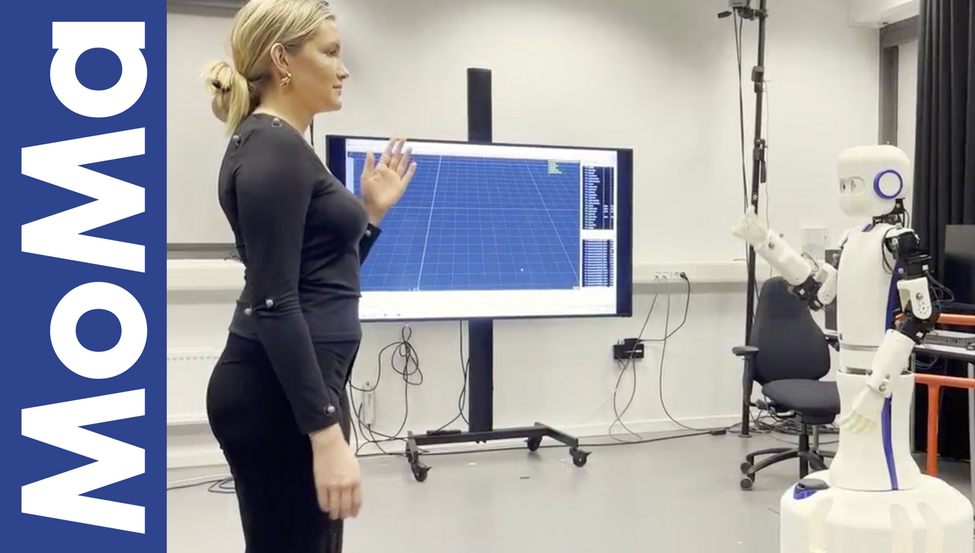MoMa brief summary
Robots are not simply computer with a body. They have capacities and possibilities that allow them to interact with humans in meaningful, engaging ways, for example as conversational partners or in joint tasks. Movements are an important for building social interactions, shaping the way social agents (be them human or robots) successfully establish, maintain, or repair intersubjective connections.
In particular, dynamic coordination of movements between interactants, also called synchronisation, seems to be a key aspect in hindering or supporting reciprocal affective experience and shared sense-making practices between humans. But is it the case for interactions with artificial social agents, such as Social Robots?
This project is called Movements Matters (MoMa), as it seeks to highlight the key role played by bodily movements for building positive interactions between humans and artificial social agents. In the project, we investigate the role of interpersonal synchronisation in building positive social interactions between humans and robots. We analyse a joint dynamic interaction between EPI, our humanoid robot, and human co-interactant, to explore whether higher kinematic synchrony improve the human perception of positive engagement with the robot.
To do so, we adopted a unique multimethod approach combining dynamic kinematic measures resulting from the human-robot interaction with qualitative assessment of the interpersonal affective engagement. Our data collection uses a sophisticated motion capture technique with psychological assessment tools (e.g., self-reports and questionnaires) and behavioural analyses of both the robot’s and the human’s behavioural display.
The purpose of the project is specifically to systematically explore the role of kinematic synchronisation in dynamic coordination of actions. This is the first project to deploy motion analysis of a robot and a human to measure synchronisation as an index of the interactional quality in human-robots interactions (HRI).
The project combines expertise in psychology and observational methods (Valentina Fantasia) with deep knowledge of the human body movements (Trond Arild Tjøstheim,) and technical knowledge and expertise in robotic design and implementation (Birger Johansson, Johannes Rosenfrost) and established expertise in cognitive modelling in artificial systems (Christian Balkenius). The project received initial funding for two years (2024-26) by the Crafoord Foundation to Valentina Fantasia (PI).

